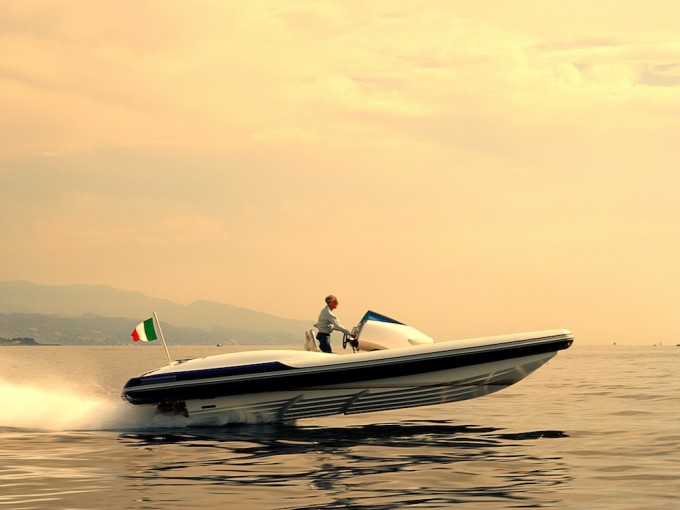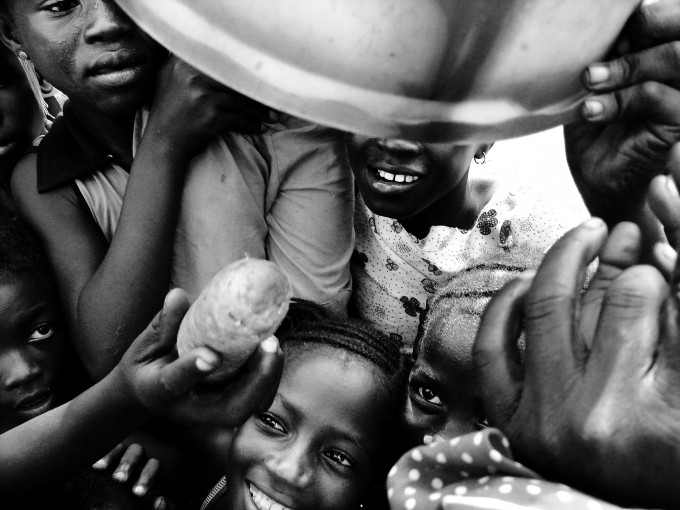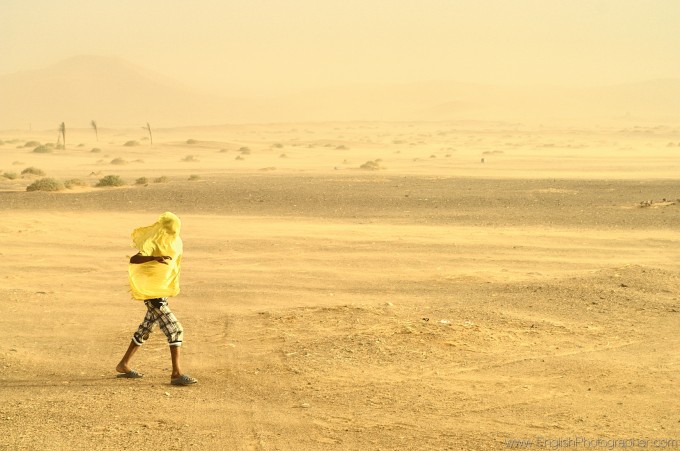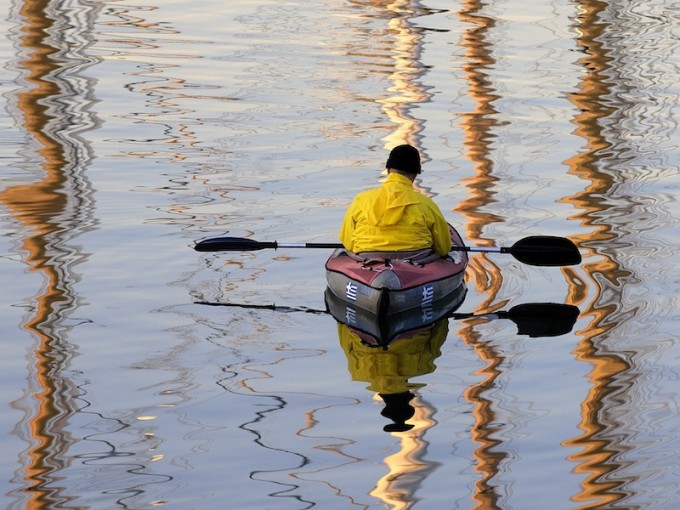When the Camera Does Matter; specialized bodies and lenses and why you need them.
By Ben Evans
Facebook is the world’s largest ‘image library’ with over 100 billion pictures uploaded. Sure, quality might be lost in quantity, but it’s a remarkable indication of how photography has changed.
If you’re like me, you’ve probably been asked what camera you use, and how many megapixels it has, followed by a dreamily wishful comment about how it would be good to have an expensive camera that would create beautiful photographs.
Obviously, the standard response is to question whether using Renoir’s paintbrushes or Rachmaninoff’s piano might automatically produce mastery. Photographers create photographs, cameras just make them. But maybe this needs more thought? I’m sure that the past masters used the best tools available to them if possible, so why can’t photographers?
A great photographer values consistency. They master the craft so that they know how to create the images that they can imagine in a range of conditions. Photography requires learning a few essential principles, and sticking to them; most, but not all, of the time.
On my courses, I teach that the camera doesn’t matter. A good photographer can take better photographs with a camera-phone than an untrained person could with the best camera in the world. This photograph was taken in Sierra Leone with a 5mp Sony digital compact.
© Ben Evans
Most photographs aren’t printed now, and anything over 10 megapixels will give you great enlargements, especially at low ISO sensitivities. And perfect quality isn’t even essential for a breathtaking photograph; look at Capa’s damaged negatives from the Normandy landings. So why do I carry a heavy Nikon dSLR and a plethora of weighty lenses on assignment? Or shoot a bulky Hasselblad when an iPhone camera might suffice for most purposes?
© Ben Evans
Put simply, because I’m incredibly aware of the limitations that gear imposes on photographic expression. In some cases, being stuck with one focal length might be a fruitful challenge. But hesitating to use anything over ISO 400 with a camera due to intrusive noise is just an impediment.
There are clear reasons for the expensive cameras and lenses that we carry; they’re not just coveted toys (well, maybe that’s a little bit of it!). There will be times that you will need extra, often specialised gear to get the shot you envisage.
Rental is the best option if you’ll only need something occasionally, or don’t want to risk the capital outlay. Otherwise, good professional lenses normally hold their value well and can be sold later.
I teach photography internationally, but I’m based in Barcelona. There are patterns. Most students on the group courses have compacts, a Canon 450D or a Nikon D7000. Private students usually use a Nikon D3s with an 85mm f1.4G or Leica M9. Film is very rare among my alumni; though I use a medium format camera with a Polaroid back for demonstrations.
One Iranian student’s husband had invested in her hobby. She had an top-end Canon camera paired with a Perspective Control prime lens; one of the most expensive in their line.
She was concerned that a lot of her photographs weren’t turning out as she wanted them. Of course the lens was to blame; she was not photographing architecture, and the camera shop probably should have advised her slightly better.
It’s recommended to choose our gear based on what we want to achieve with it, not because it’s the latest ‘thing’, the most recommended and well-reviewed or the largest investment. Sometimes, you’ll need to invest a lot to be sure of catching the moment. There are opportunities available with a Nikon D4 and 600mm or a Phase One that wouldn’t be possible with a Leica M3 or a Sony Nex 7.
When you’re considering what you need next, I advise that you consider two things; Control and Output.
Control covers the ability to get the shot. Maybe you need a very large aperture to blur the background or work in low light without flash? Perhaps you need a couple of Profoto strobes to enhance the ambient light? Output requires consideration of what you’re going to do with the photos. A Hasselblad H4D should be able to print billboard-size images or capture beautiful skin tones. But if you’re photographing on the street for an online gallery, you’d probably be better off with a different camera.
© Ben Evans
Photography manufacturers exist to sell you more cameras, lenses and flashes. Don’t make the mistake of thinking that you need to constantly upgrade to the latest model, even if it is objectively better.
But nor should you think that the camera doesn’t matter, and revel in using a single lens on one body. As your craft improves, the limitations of your current gear will become more apparent. Borrow or hire some specialised equipment and find out what suits your style. The most important principle is to try the different options available and find out for yourself what fits.
About the Author
Ben Evans
Ben teaches photography in Barcelona with www.BarcelonaPhotographyCourses.com and keeps a photoblog of ‘fine art street’ photos of Barcelona at www.i-Barcelona.com. He photographs internationally with www.EnglishPhotographer.com. He shoots Nikon, Hasselblad, Apple (iPad 3) and those little throwaway waterproof film cameras with the plastic lenses.








Ben, great article and raised a few conversations with my work colleagues. The consensus was as photographers, we should consider that there is a continuum where kit is primary / output secondary to the complete opposite. No matter who we are and our motives, one thing is for sure we all support the same diverse community – photography.
Companies may produce “bigger (or smaller) and better” kit but its our choice in the long run whether we buy it. BTW for my photography degree – I still use my Canon D60 from 2003 along with a 1D Mark II and a more recent purchase of a s 5D Mark II and still have lens dating back to 2002. However I still covert a Leica M9!!
Thanks Nick, I agree with you and your colleagues. I think it’s about realising when the gear is putting limitations on your work and then upgrading if necessary. Totally understand about the M9! I’m rather tempted by the D600 and the XE-1 at the moment but the ‘old’ camera still manages to churn out a good photograph – This is from the Pyrenees a few days ago – http://500px.com/photo/13863151
Ben
Very interesting. To my feeling a lot of people remain very featured-focussed instead of really tool focussed. On the other side, companies like Nikon & Canon are relying a bit on this phenomenon. They have centered their advanced solutions around a feature-rich DSLR-market, so they won’t invest f.i. in an EVIL-ange that can do the same with even improved ergonomics and a pro-lens range. I found the recent release of the D800 and 5D MkIII so typical: first the hype on the rumor sites, spy pictures, leaked info,… a whole culture is built in advance around the fact you need these new cameras for credibility reasons, for the faster AF, for the higher resolution, the better features, the movie capabilities, while… in reality it doesn’t matter that much. This whole commercial game has one purpose: selling a new camera to even the more advanced or professional photographer every 2-3 years. If people would think more in terms of real tools and what you need for the job, this wouldn’t work at all. But it does. The whole world has changed and is different now from the 70’s, when you bought a solid Nikon, Canon or Minolta SLR and a few good lenses with the plan to do half a life with it.
I’d not thought about it as being feature-focussed/ tool-focussed before; it’s a great distinction. I’ve found that the electronics go in the newer pro cameras before the mechanics even begin to properly wear in. I remember my old Olympus OM2n – felt like it would go on forever!
Great article !
It’s a fine introduction, but where is the rest of the article?
Just a note on the title: Generally arguing against the urge to constantly upgrade your gear, the essay seems to be more about why or when you DON’T need special bodies and lenses than when you do.
Best article I have seen here in a while, Ben. I have hung on the my “vintage” cameras (D2H) and using the lenses that work for me. I have fast lenses and slow lenses, zooms and primes, depending on what I desire to achieve. And, Michiel, your “aging” D700 is brand new compared to my D2H bodies.
One thing, Ben. I have had images from my D2H bodies used on billboards – 4.2 MP blown up huge – and when viewed from the street are just fine. Up close the details will be missing but at the proper viewing distance they have held up well. 10 MP for me is overkill. But I am considering a used D3 mainly for the expanded ISO range.
Finally, your imagery is fantastic, IMO. The kind of images I strive to captured. Thanks for the inspiration!!!
Thanks Rich, much appreciated and very interesting to hear about the 4.2mp for the billboard. I think skill and experience goes a very long way; more than having the latest camera. I think the D3/D700/D600 do have that edge of quality images in low light and could be worth the upgrade if you’re doing a lot of high ISO work.
Most people will (like me) have one camera with some lenses, to do all, and will neither have the funds nor the inclination to spend those funds on various cameras for various goals and subjects.
I’ll just make do with my aging D700 with 5 primes. And some analog slrs with primes and Tri-x… 🙂
Beautiful images!
Omg….another tiresome camera doesn’t matter article flogging the same ,very dead horse.
Nothing new here…move on folks.
Here’s my take. The camera MUST NOT matter and try to adhere to that strictly. Choose one body and one focal length. Be forced to do with what you have…necessity is the mother of invention.
Can’t zoom in to capture the sun rising over Angkor wat because you have a wide angle? Take a photo of all the Japanese tourists with thier big white canon lenses trying to take that same image…..much more interesting.
Limit your palette. Restrict your technical choices.
You won’t ‘miss’ anything that hasn’t been done to death.
Strive for originality ….not ‘craftsmenship’.
Thanks, it’s an interesting idea. I’ve certainly thought about trading everything in for an M9p and a 35mm prime, but I don’t think my clients would be so thrilled if I did. But then the argument might be to get an 18-200mm. I think you’ve got to balance flexibility with quality. Limitations certainly help your development, but the working pro generally doesn’t have the luxury of imposing more restrictions than already exist.
Thanks everyone, great to hear some new thoughts about this and really glad you enjoyed the thoughts and photos.
Thank you to Roy for collaborating my belief that it’s possible to take a really excellent photo with a compact camera; http://www.flickr.com/photos/royprasad/4202028270
Completely agree with you Dro, the photographer’s preference is paramount, and will change with the subject matter – even with the mood!
Didn’t know about Dudley Moore teaching Pete Cook in record time – will have to find out how he did it to improve my photography courses…
Just seen Steve’s announced the X-E1 (http://www.stevehuffphoto.com/2012/09/06/the-new-fuji-camera-is-here-the-x-e11-and-new-lenses-pre-order-now/) – not sure how he does it but I certainly feel very compelled to pre-order mine now! X-Pro1 image quality with fast auto-focus? Maybe this is the walk-about camera we’ve been waiting for…
Ben
Refreshing article and very nice images. Thanks.
its not the indian OR the arrow… its the indian AND the arrow. IOW, a sharpshooting indian operating in synergy with the most accurate arrows available.
Tools matter somewhat.
If I am going into the bush to take some long, gentle photos of scenery, there will be a zoom, a heavy DSLR and a tripod in my pack. But… if I am going to the streets, or being touristy, I’d rather carry a rangefinder with a 50 mm and a wide angle.
And lots of triX. You still cannot beat a good print: the scans lose information.
Doing black and white film helps with colour (where velvia is OK, but digital is almost as good) but is a different game altogether. And to get the quality of a good DSLR on film I would have to go to medium or large formal. Which I cannot afford — keeping two systems going is enough.
I was thinking to myself this very morning that I used to take a lot of picture at long focals and I should really use this G9 again sometimes. Maybe I’d enjoy a lot of DOF without cutting the light once in a while.
The image making in my head should precede the choice of a tool to take it as Ben wisely said. Easier said than done, but that’s the way of improvment!
Love the article. My current camera is the old 5D with the old 70-200mm 2.8 and the cheap 50mm 1.8. It does all I need.
(Anyone else having trouble not being able to scroll back to edit their posts? It might be just my laptop.)
I’m not sure too many readers of this blog would have been contemplating taking their half-plate Thornton Pickard Imperials out for a little street shooting before reading the article. And I suppose the anecdote of the geared-up mega-rich person will have some sagely nodding that money can’t buy talent, in a self-comforting way. Well, of course we all know it can; remember Dudley Moore was able
to teach non-player Pete Cook Rach’s 3rd concerto in 3 days when he had been offered
enough money.
enough money…
Thanks, Ben, for a simple, yet well thought-out article, coupled with some lovely photos!
Very true and well say !. Thank you Ben , Love all the photos.
it’s like cars – you can’t impress some kind of girls with Toyota Camry and achieve your..hm.. goals.
But Porshe does its job on the spot! LOL
Well, not all girls. I very much dislike expensive and extravagant cars and things. I prefer Toyota Camry. But as you said, “some kind of girls”. It’s your choice what kind of girls you like. I like people who like me without me being rich or owning expensive things. Just wanted to remind that all of us are not after money… 😉 But yes, I like good cameras and lenses…. :).
haha it’s just an another “cars=cameras joke” 😉
Thanks Ben, I enjoyed your pictures very much.
A good post.
Since rachmaninov was a composer… a cheap pencil and paper are all that is needed to reveal the talents of him or Renoir.
You acknowledge and I agree that equipment and technical knowledge are partly necessary in order to generate the desired image. This is a serious challenge to the status of photography as an art form and I personally don’t consider photography as art per se (although I am passionate about it). This is compounded by an increasing level of technical competence creating a huge number of pleasing images but whose artistic value is an ever decreasing circle.
Conversely a technically poor picture captured on a poor camera can be of immense value to society if it is of an important event and it is the only image.
Therefore I gravitate more to photos are there to convey news worthy events as the most important side to photography. Whereas music and painting and the written word ate my poisons of choice for emotional or spritural nourishment
yawn, but, just for the record – Rachmaninoff is the name and he was “widely considered one of the finest pianists of his day”.
I agree, the camera is just a capture device. It is the photographer who makes the picture happen. One of my most satisfying candid portraits was this accidental picture I shot with a $150 Olympus point and shoot camera:
http://www.flickr.com/photos/royprasad/4202028270
I have a lot of wonderful candid portraits I have shot over the years with various Nikon and Leica cameras and exotic lenses. However, none of them was more satisfying than the above image.
At the end of the day, the camera + lens is a tool. And like with any other job, it is optimal to use the tool that best maps to the task at hand, within one’s budget.
I always advise people to really think hard about what kind of photography they really enjoy, as well as what they are really not interested in. Once they understand a bit about themselves, I tell people to get the best lenses they can afford to buy, and the cheapest camera that will do their job.
Excellent pic Roy, and it’s plenty sharp for any camera.
Fine article. One topic that I felt was missing in this story was the preference of the photographer. Regardless of whether someone believes a Leica M9 has better IQ than a D3 or the other way around, it all comes down to what kind of camera the photographer likes to “physically” shoot with. Some like to shoot completely manually, therefore rangefinder cameras are their prime choice. Others like how DSLRs have a grip to hold and aren’t concerned with focusing themselves and just want the camera to snap quick shots.
1. Using my J1 at Paralympics Excel Theatre (London)
wheelchair fencing, sitting volleyball, powerlifting
ISO1600 biggest aperture, shutter had to be approx 1/40th
I bought J1 specifically for action.
I hadn’t considered given sensor size id have to slow down the shutter so much even at ISO1600
thus it wasnt much use for indoor relatively slow action.
2. My old Canon A610 i took as backup.
Well with its 140mm max zoom its not much use for getting in close.
:::
On Saturday 8th i have night ticket to Olympics Stadium : final night
I would want APSC DSLR + 70-300mm night time Paralympics action
Bridge with 600-80mm for video
Nex + legacy 50/1.4 for creative in Olympic park.
J1 for day time out n about in London
:::
Aye each camera specialised body, lenses matter. .
Loving the composition and the colours in this collection of images, some great points too.
A wonderful and well concidered article. It covers a lot of ground that people always bicker about on message boards but is more dynamic than just sitting on one side of the fence.
thanks great article and advice
and pics of course are fab!!!!!
“Sometimes, you’ll need to invest a lot to be sure of catching the moment. There are opportunities available with a Nikon D4 and 600mm or a Phase One that wouldn’t be possible with a Leica M3 or a Sony Nex 7.”
I agree but sometimes it’s the opposite. There are opportunities available with a nex7 that wouldn’t be possible with a D4.
Lovely thinking…
I always believe
The right tool for the right job..
offcourse.. the person using the tool is half the other way…
Sincerely
William Jusuf
Awesome article, great pics too. You are absolutely right. The camera one is using doesnt matter much for great results but only when a specialty is involved. Thank you for reminding that we must shut up about gear and just go out & shoot!
Cheers
James